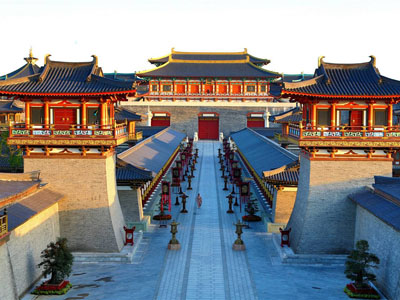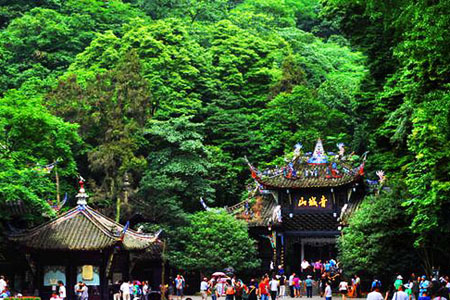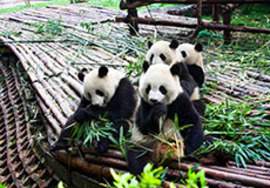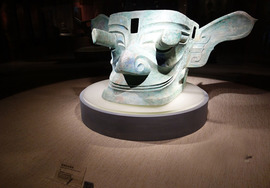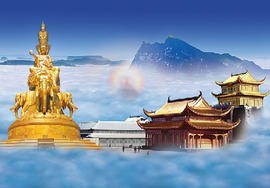Gongga Mountain(Tibetan:Minya Konka in Tibetan), located in the south of Kangding, Sichuan Province, is the main peak of the Great Snow Mountain. "Gong" means ice and snow in Tibetan, and "Ga" is white, which means "white iceberg". It is 6,000 meters higher than the Dadu River on its east side, and is known as "Shu king of the hill". The mountain is about 60 kilometers long from north to south and 30 kilometers wide from east to west, and its main peak is 7556 meters above sea level.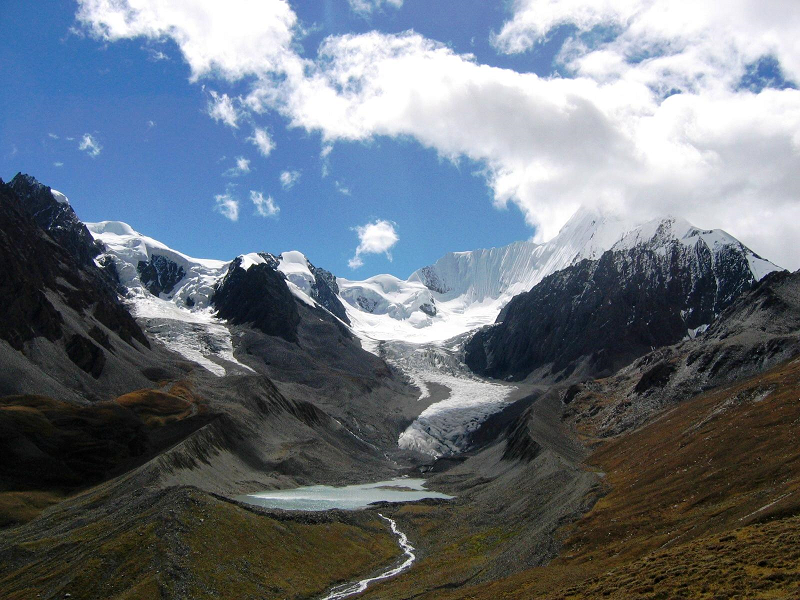
There are 45 peaks with an altitude of more than 6,000 meters around, and the main peak stands at the top of the peaks with an altitude of 7,556 meters. The mighty snow-capped mountains are majestic, clean and magnificent, creating a magnificent landscape of extremely high mountains.
Gongga Mountain Scenic Area, centered on Gongga Mountain, consists of Hailuogou, Mugecuo, Wuxuhai and Gongga South Slope, covering an area of 10,000 square kilometers, and is a national-level scenic spot. Gongga Mountain area is a minority area, where there are Tibetan Buddhist temples such as Gongga Temple and Tagong Temple, and visitors can enjoy the colorful ethnic customs of Tibetans and Yi people.
Influenced by the ocean monsoon, the snow line is 4,600~4,700 meters above sea level, and the glacier develops in a large scale. The Hailuogou Glacier, the largest glacier in Dongpo, is 14.2 kilometers long, with its end reaching 2,850 meters. It has fallen into the forest belt. Under the action of long-term glaciers, the mountain peak has developed into a cone-shaped tind, surrounded by cliffs of 60 ~ 70 degrees, making it difficult to climb. In 1932, the American expedition climbed successfully. The Chinese mainland mountaineering team reached the summit in June 1957.
The main peak of Gongga Mountain is magnificent, covered with snow all year round, with an altitude of 7556 meters and a relative height difference of 6500 meters on the east slope. It is a typical representative of extremely high mountains, not only the first peak in Sichuan Province, but also the highest peak in Hengduan Mountain System in the southeast of Qinghai-Tibet Plateau, and one of the world-famous peaks.
Gongga Mountain is a world-famous mountain adventure and mountaineering holy place, but it is also the most difficult to conquer the large-scale and extremely high mountain peak, and its summit is far more difficult than Mount Everest. According to statistics, so far, only 24 people have successfully reached the summit, but 37 people were killed during and after the climb, including 14 foreigners. The death rate of mountaineering far exceeds 14% of Mount Everest and 30% of Mount K2, second only to Meili Snow Mountain and Yala Snow Mountain.
Gongga Mountain is famous for its glaciers. There are 159 modern glaciers at the foot of the mountain, covering an area of more than 390 square kilometers. It is one of the earliest developed areas of marine glaciers in the world.
The mountainous area is full of peaks, deep ice and snow, and full of obstacles. It is one of the high mountains with well-developed marine mountain glaciers in China, occupying a very important position in mountaineering and scientific research, and is a famous mountain favored by mountaineering enthusiasts.
Main Tour Attractions of Mount Gongga:
Gongga Temple
Gongga Temple is one of the three holy places of Karma Gaju Sect of Tibetan Buddhism (white religion) (Chubu Temple in Tibet, Dege Eight Temple and Muya Gongga Temple). From the beginning of the 20th century to the 1950s, there once appeared a great scholar (the name of Tibetan people who are proficient in Tibetan studies). He is the ninth Gongga living Buddha, Karma Xiezhu Quejie Shenggen.
Gongga Temple is divided into Old Gongga Temple and New Gongga Temple. Old Gongga Temple is located under the main peak of Gongga Mountain in Sichuan. The new Gongga Temple is about a day and a half's ride from here. Nowadays, the old Gongga Temple has become the only way for backpackers to cross the Gongga Snow Mountain on foot, providing a few simple rooms for backpackers to stay overnight.
Located at the foot of the main peak of Gongga Mountain, Old Gongga Temple was built in the mid-13th century by Zabaiba (the first Gongga living Buddha), a disciple of the second Karmapa Bashi. It has a history of more than 600 years, and it has been a sanctuary for the practice of Gongga living buddhas in past dynasties.
Tianwan River
Tianwan River originates from the southern slope of Gongga Mountain, and the scenic area extends along the river. More than 10 peaks with an altitude of more than 5,000 meters are covered with snow all year round. The mountains are rugged, with steep peaks and snow-capped, and the "Rizhao Jinshan" is particularly spectacular, which is a famous wonder of Gongga Mountain. The lakes and mountains, blue sky and white clouds are reflected in them, which are more charming and moving.
Tianwan River is the largest river in Gongga Mountain, with turbulent landscape and magnificent momentum, and dozens of waterfalls are flying down, which is spectacular. Geothermal resources here are very affluent with many hot springs, which are abundant in health-care trace elements at 30-70℃.
When to go there
The best season for mountaineering tourism in Gongga Mountain is usually from May to June every year, because there is high temperature but not too much rainfall , which is suitable for tourism. In the dry season, the weather is sunny and milder than other areas in the same latitude. The highest temperature in a year is April and May. Mountaineering activities are mostly selected in this period.
Recommended Gongga Tours:
1. Mt. Gongga Trekking Adventure
